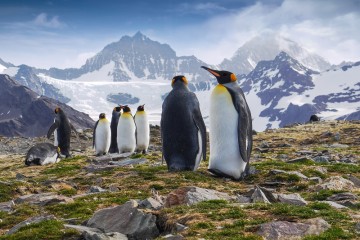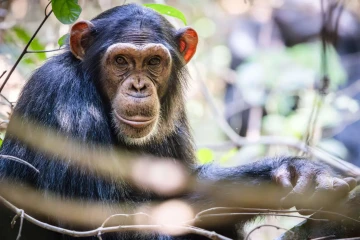Discover the myriad of factors that’ll help you determine the best to visit the stunning Galapagos Islands on a small ship cruise.
Given its seemingly tropical location – straddling the line of the Equator – you’d be forgiven for thinking that the Galapagos islands of Ecuador are a balmy and sun-drenched destination to visit at any time of year. Yet given its unique geology and the fact that the stunning island cluster sits on a rather frosty sea current, that is actually not the case.
That doesn’t mean, however, that the Galapagos are not simply magnificent to visit, at any time of year.
See all our Galapagos cruises here or pick from Vivas favourites below;
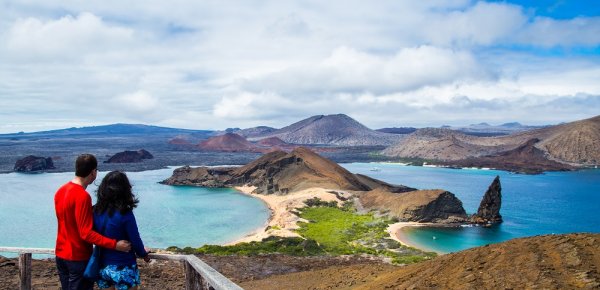
Panorama of the Galapagos Islands from the island of Bartolome, Galapagos. Ecuador.
Why you should visit the Galapagos Islands
Explore the diversity of tours to Galapagos Island.
Never mind when to visit for a moment, let’s first highlight all the reason why you should visit the breath-taking Galapagos.
The Galapagos Islands of Ecuador are among the world’s very best wildlife sanctuaries and that’s because this ‘sanctuary’ is the brainchild of Mother Nature, not man. A cluster of a dozen or so main islands (and several smaller ones) inhabited by some of the most unreal creatures on earth, like the famed Giant Tortoises, the curious-looking Blue Footed Boobie (not to mention the Flightless Cormorant) the Technicolor Sally Lightfoot Crab, fierce-looking Iguana and so many more species of reptiles, birds and just about all creatures, great and small.
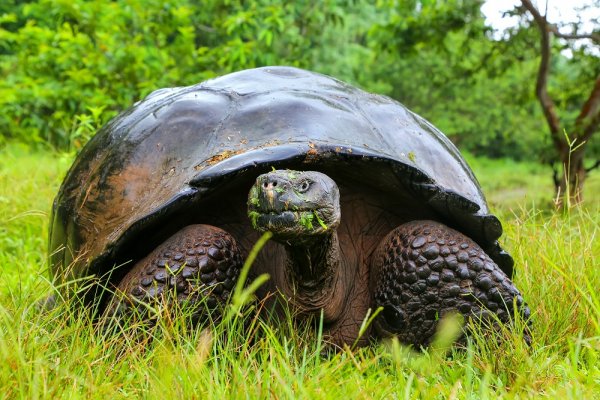
Giant tortoise in the Galapagos Islands
The Galapagos float about 1000km off the west coast of central Ecuador. Direct flights to the main island of Santa Cruz depart from Quito (the Ecuadorian capital) and the coastal town of Guayaquil. Visitor numbers are restricted in what is now a protected marine park and, although there are options for island-based excursions, the very best way to experience the Galapagos Islands is on a small-ship cruise. Itineraries range between 4 and 12 days and cruise vessels vary to offer different levels of comfort, luxury and budget.
Aside from the sensational wildlife, the Galapagos is all about the raw beauty of nature and their stunning remoteness. Their volcanic origin also means that Galapagos travel is all about dramatic landscapes and visual feasts. Here you’ll find some of the Dreamiest Beaches in South America.
Even if all those creatures weren’t here, the Galapagos would still rate among the most spellbinding islands on earth.
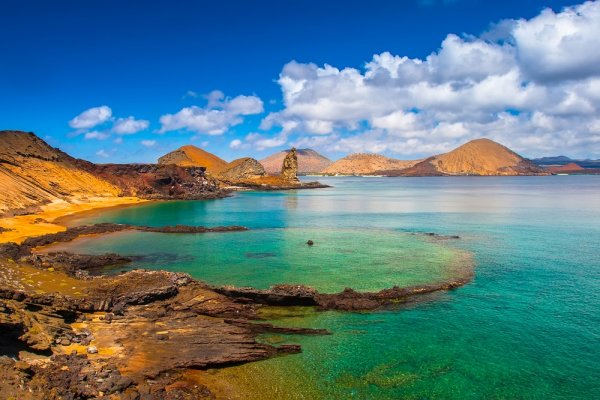
Volcanic landscape on Bartolome Island on the coast
Planning your Galapagos cruise around wildlife experiences
Cruise in the waters of Galapagos Island. Book your trip with us.
The wildlife on the Galapagos stays put all year long (we would too, given half the chance) but that doesn’t mean you can experience every special wildlife event at any time of year. There are migration of non-endemic species like humpback whales, as well as many unique nesting and courting events to consider so, in reality, many people plan their Galapagos cruise in time with a particular wildlife event they wish to witness or experience, be it the nesting of the Waved Albatross on Espanola, Flightless Cormorants on Fernandina and Blue Footed Boobies on San Cristobal; to see Green Sea Turtles hatching on Floreana and to swim and snorkel with baby sea lions, which is as unforgettable as it sounds.
Seriously…those puppy eyes…
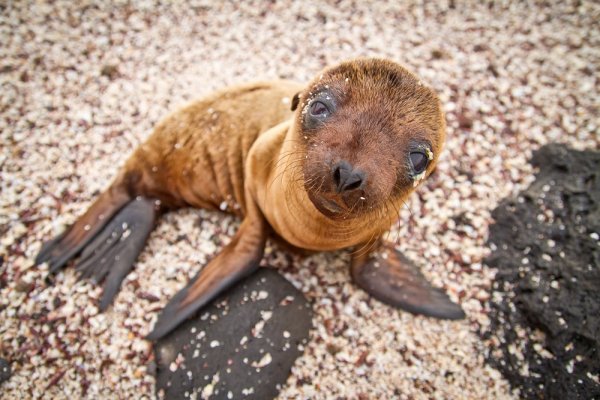
Galapagos Sea Lion
Best Time to Visit the Galapagos Islands
Experience the beauty of the flora and fauna of Galapagos Island. Explore your opportunities here.
Now you know why you a Galapagos island tour is an absolute must, it’s time to see WHEN you should be planning your trip.
Boasting a subtropical climate with a few unique characteristics thrown in for good measure, the Galapagos boast idyllic sightseeing temperatures (average daytime of 24C) all year long. What distinguishes the months of the year, however, are sea temperature and rainfall, which can at-times disrupt both on-land excursions and, more importantly, underwater visibility for snorkelers and SCUBA divers.
Being a tropical location, it means that you get cool and dry month OR warm and wet ones. Just to prove the point that one can never have it all when travelling…
Here’s a quick overview of the climate of the Galapagos:
December to May
The first four months of the year are the rainiest, making May quite the idyllic in-between month for Galapagos cruises. Expect between 80 and 100mm of rain during this period yet warmer sea temps of around 24C. December is always busy due to international vacation times yet, to be honest, it is quite a superb month when you’ll only get a light daily drizzle but will have the spectacle of nesting turtles and frolicking baby sea lions – who are just starting to get inquisitive. Keep in mind that warmer temps make every creature a little, shall we say, amorous. Nesting and courting season coincides with warmth, naturally, so you’ll find most epic wildlife rituals to be happening during this period, except for Blue-Footed Boobies who buck the trend and mate in the heart of ‘winter’, or July. Irrespective of rain, the warmest months of the year attract the highest number of visitors although that part shouldn’t worry you if you’re planning a Galapagos small-ship cruise as you’ll only ever be in the company of your fellow yacht-mates anyway.
June to November
The cool and dry months are favoured by avid SCUBA divers because they offer the best visibility of all, albeit with the need for a thick wetsuit. The coldest month of all is usually September when daytime temps dip below 20 C. Colder temps mean migrating marine life and a thriving bird action on the Galapagos, as the seas brim with plankton – which loves colder currents – thus attracting a greater variety of birds. The abovementioned Blue Footed Boobie is an absolute highlight for Galapagos cruise passengers at this time. Tour the Galapagos between June and September and you’ll also have the chance to see migrating humpback whales. Book your Galapagos island tour for the last two weeks in November, however, and you could bag all the benefits of December but with increasingly warmer temps. If you’re worried about travelling by boat – or don’t know if you would be – then definitely set your sights for this period, which is defined by calm seas and winds.
When trying to find a ‘perfect’ time of year for a Galapagos island vacation, it may be frustrating to know that you couldn’t possibly see it all on one visit. Yet on the very positive side, the fabulous news is that given the sheer concentration of wildlife experiences to be had here, there’s always something going on, no matter when you visit.
Ready to experience the magnificent Galapagos Islands, first-hand? Then check out the latest additions to our Galapagos cruise fleet and all the amazing Galapagos experiences we offer, and contact us today.
Here are a few more blogs you may find interesting to read:
Laura Pattara
Laura Pattara writes for Viva Expeditions with a special love for all things Latin America. She had guided overland tours across the continent, reached Machu Picchu five times on foot, and even dressed up as a giant toucan for Carnaval. With a degree in languages and two decades of global travel experience behind her, Laura has a long-standing love for the Andes, soaring condors, and a truly delicious empanada.
|
